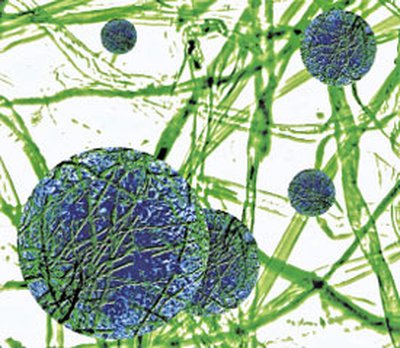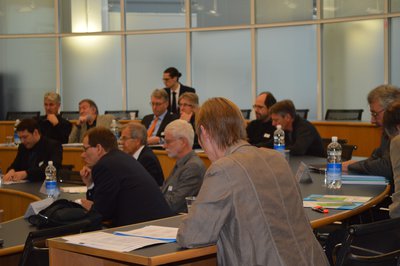13 Dec 2013
The nanotech challenge: bringing law into line with technology
New technologies pose problems when it comes to regulation. What was true of the invention of railways in the 19th century is equally true of nanotechnology in the 21st. The law has to play catch-up.
Rachel Liechti on the questions being discussed
A workshop being held at the World Trade Institute (WTI) in Bern on 13 December looks at issues of liability surrounding nanomaterials and whether legislation needs to be adapted. It will consider the international framework as well as regulations in place in Switzerland and the EU.
Nanomaterials may be natural, incidental or manufactured. What they all have in common is that at least 50% of the particles they contain are nanosized, i.e. with one or more external dimension in the size range 1 nm-100 nm.
They crop up in all product sectors – from hardware to cosmetics and food. At different stages in their lifecycle they may have positive or negative effects on welfare, health and the environment. So is one-size-fits-all regulation realistic?
The event, organised by WTI Senior Research Fellows Georg Karlaganis and Rachel Liechti within the NCCR Trade Regulation cluster 3.2 on governing new technologies, seeks to find a way through the maze of questions and possibilities.
“Legislation is always lagging behind technology. The question is, by how much?” says Karlaganis. “My question would be, do we need new rules? And if we need new rules would that be on a national, regional or global level?” adds Liechti.
“We’re looking for answers, that’s why we have experts coming in who will explain the regulations in Switzerland and in Germany and will offer similar cases, with asbestos for example, and show the difficulties that arose there.”
Lessons from the past
Nanotechnology is new, but similarities can be drawn with genetically modified organisms (GMOs) and materials with a relevant history of product liability, such as asbestos, when considering what legal rules to apply.
“If you look at history, the obvious example that comes to mind is the asbestos case. There are some nanoparticles such as carbon nano tubes CNT which have a similar structure to asbestos fibres. We need to be careful not to repeat the same mistakes,” warns Karlaganis.
But legislation governing GMOs could provide a useful basis for nanomaterial product liability rules. “From a legal point of view it may be possible to apply the same instruments,” the researcher points out.
Product labelling
Rule harmonisation is one burning issue under consideration at the workshop. Another is the labelling of products to indicate the presence of nanomaterials. The customer might appreciate compulsory labelling but would producers be willing?
“If you have products containing nanomaterials: electronics, mobile phones, bicycles or tennis racquets, the question is, do you have to inform the consumer? Because this might influence your decision as a consumer on whether or not to buy a tennis racquet with carbon nanotubes in it,” says Karlaganis.
“So this is a key point, it’s controversial, should it be compulsory to label these tennis racquets or would this be detrimental?”
“And if the state decides labelling doesn’t have to be mandatory, who’s to blame when someone suffers damage. These are the questions as far as liability is concerned,” adds Liechti.
The workshop will be held in German, with the key points summarised in English.
Further info
Workshop programme





